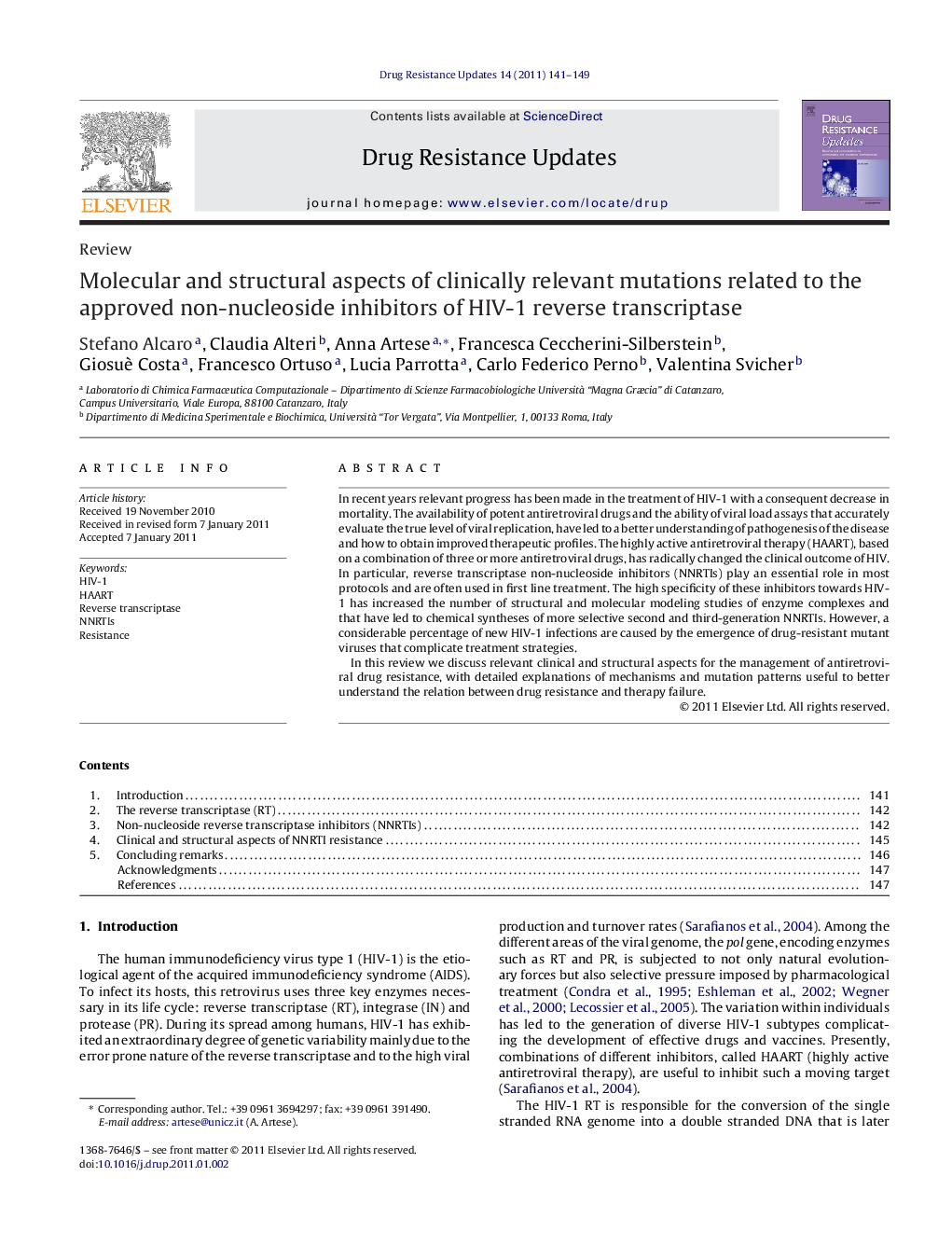| Article ID | Journal | Published Year | Pages | File Type |
|---|---|---|---|---|
| 2120450 | Drug Resistance Updates | 2011 | 9 Pages |
In recent years relevant progress has been made in the treatment of HIV-1 with a consequent decrease in mortality. The availability of potent antiretroviral drugs and the ability of viral load assays that accurately evaluate the true level of viral replication, have led to a better understanding of pathogenesis of the disease and how to obtain improved therapeutic profiles. The highly active antiretroviral therapy (HAART), based on a combination of three or more antiretroviral drugs, has radically changed the clinical outcome of HIV. In particular, reverse transcriptase non-nucleoside inhibitors (NNRTIs) play an essential role in most protocols and are often used in first line treatment. The high specificity of these inhibitors towards HIV-1 has increased the number of structural and molecular modeling studies of enzyme complexes and that have led to chemical syntheses of more selective second and third-generation NNRTIs. However, a considerable percentage of new HIV-1 infections are caused by the emergence of drug-resistant mutant viruses that complicate treatment strategies.In this review we discuss relevant clinical and structural aspects for the management of antiretroviral drug resistance, with detailed explanations of mechanisms and mutation patterns useful to better understand the relation between drug resistance and therapy failure.
